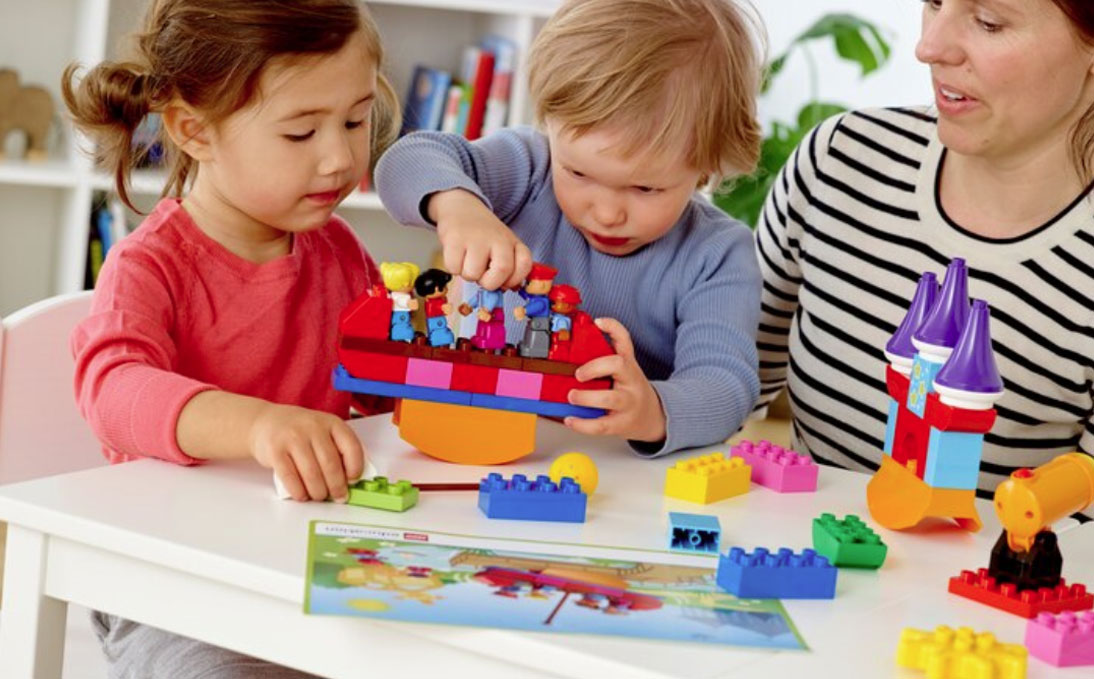Babies Love to Explore. Children are inquisitive individuals; they love to explore things through their five senses. Kids learn and discover by touching objects, feeling surfaces, and listening to sounds. Is the toy soft or hard? What’s the difference between smooth and rough? Why does the rattle make noise? Why are all Lego blocks not of the same color? Every toy that the child picks up intrigues him to find out more & more about the world around him and in the bargain understand oneself better.

Developing Motor Skills
Fine motor skills are the child’s ability to use small muscles of their hands and wrists to perform tasks like holding a crayon or a ball by gripping it between their fingers. Did you know that something as simple as holding a rattle, requires coordination between muscles and the brain? So, when children are busy playing with toys, they are actually strengthening their fine motor abilities. Let’s take examples of some toys and how they contribute in enhancing motor skills;
Squeezing Liquids through an Eye Dropper
This is the best activity where children put pressure using their pincer muscles to squeeze liquids using a dropper. The child can squeeze the dropper to suck in paint from a bowl and then release the paint onto paper by squeezing again.
Passing and Staking Rings
This game will get you reminiscing about your early childhood days as a toddler. There are a set of colorful rings and the child has to pass them through a cone, one above the other. This staking ring activity helps improve ‘eye-hand coordination’ and children learn about colors & numbers simultaneously.
Safety Scissors
Cutting prepares the child for pre-writing skills before they learn to use a pencil properly. Kiddie scissors have blunt edges and hence is safe for the child to use. Holding the paper in one hand and scissors in the other also helps strengthen grip, visual motor skills, muscle development, and concentration. As the child grows, the complexity of toys also increases. One matures & understands how to manipulate objects. Here are some activities for 3.5+ year-old preschoolers:
Shape Sorting Toys
The child gets his hands on a wooden cube with different slots cut out into shapes. The matching pieces of wooden blocks in shapes like; circle, square, and rectangle are separately made available so that the child inserts the corresponding block in the correct slot.
Role-Play Toys
Do you remember what character you played in your pre-school days? Maybe a doctor or a teacher? Kids love to act out and mimic their models by making use of props such as; a doctor’s set, kitchen play set, art set, etc.

LEGO® Education is an excellent platform that provides hands-on learning to students at every stage to spark their creativity streak and improve critical thinking skills. The program is designed to cater to students and meet them through their learning journey at every stage of development. Here are some examples of modules designed under the LEGO® Education program;
LEGO® Education STEAM Park is designed for children 3 years and above. The kit aims to tap on the exploratory capabilities of the learner through creative play activities under the STEAM Program (Science, Technology, Engineering, Art, and Math) where DUPLO Bricks are used to construct a park with dynamic rides, and have fun too.
For 6+ age children, when they leave pre-school and enter formal school, the LEGO® Education SPIKE™ Essential is a perfect gift for them. At this age, students use playful Minifigures, hardware such as an intelligent two-port hub, motors, Light Matrix, and Color Sensors to create impressive scenes & models.
The LEGO® Education SPIKE™ Prime Set is for students 10 and up. Children get introduced to the fascinated world of coding and use intuitive drag-and-drop language based on Scratch, to garner 21st-century skills while programing robots and having fun.

